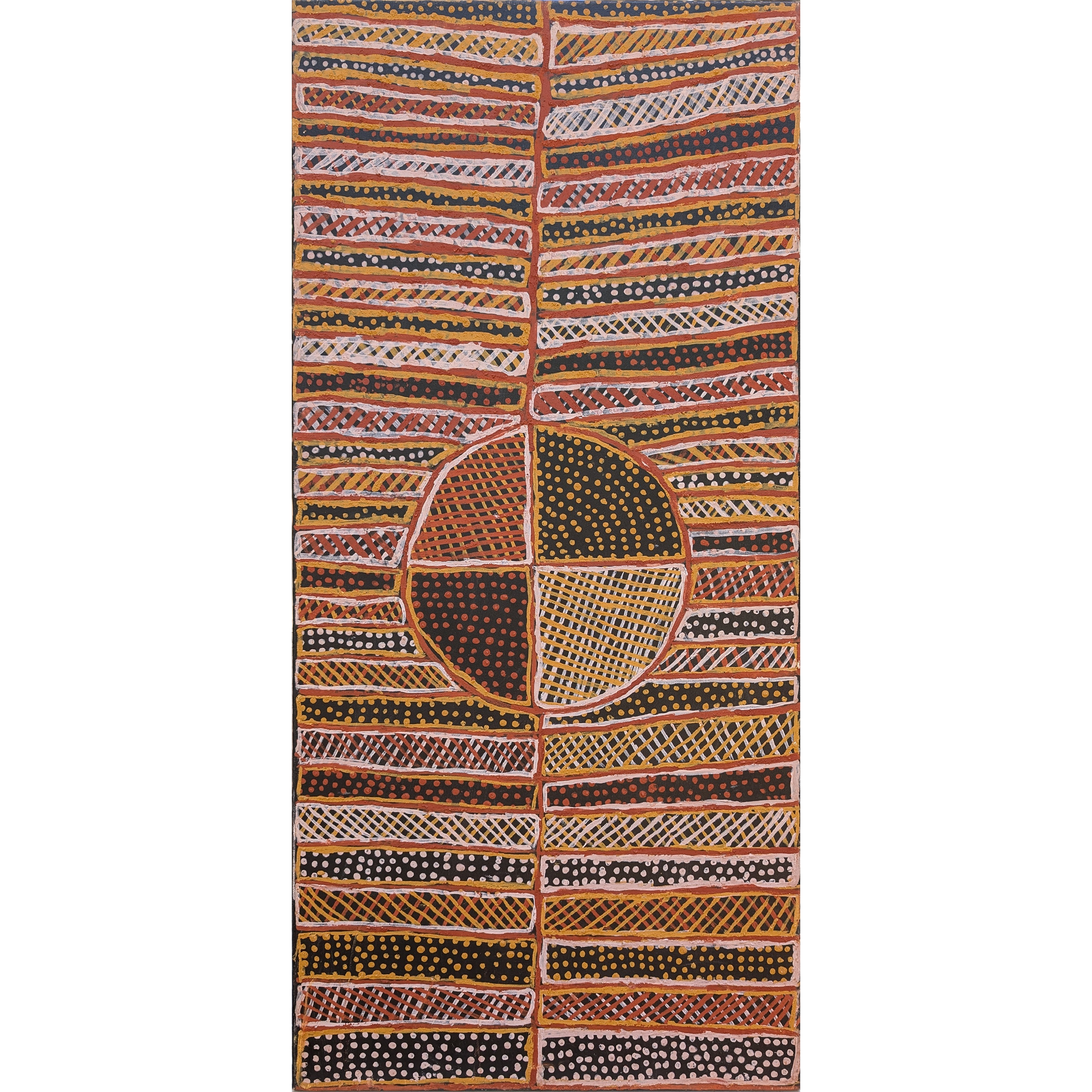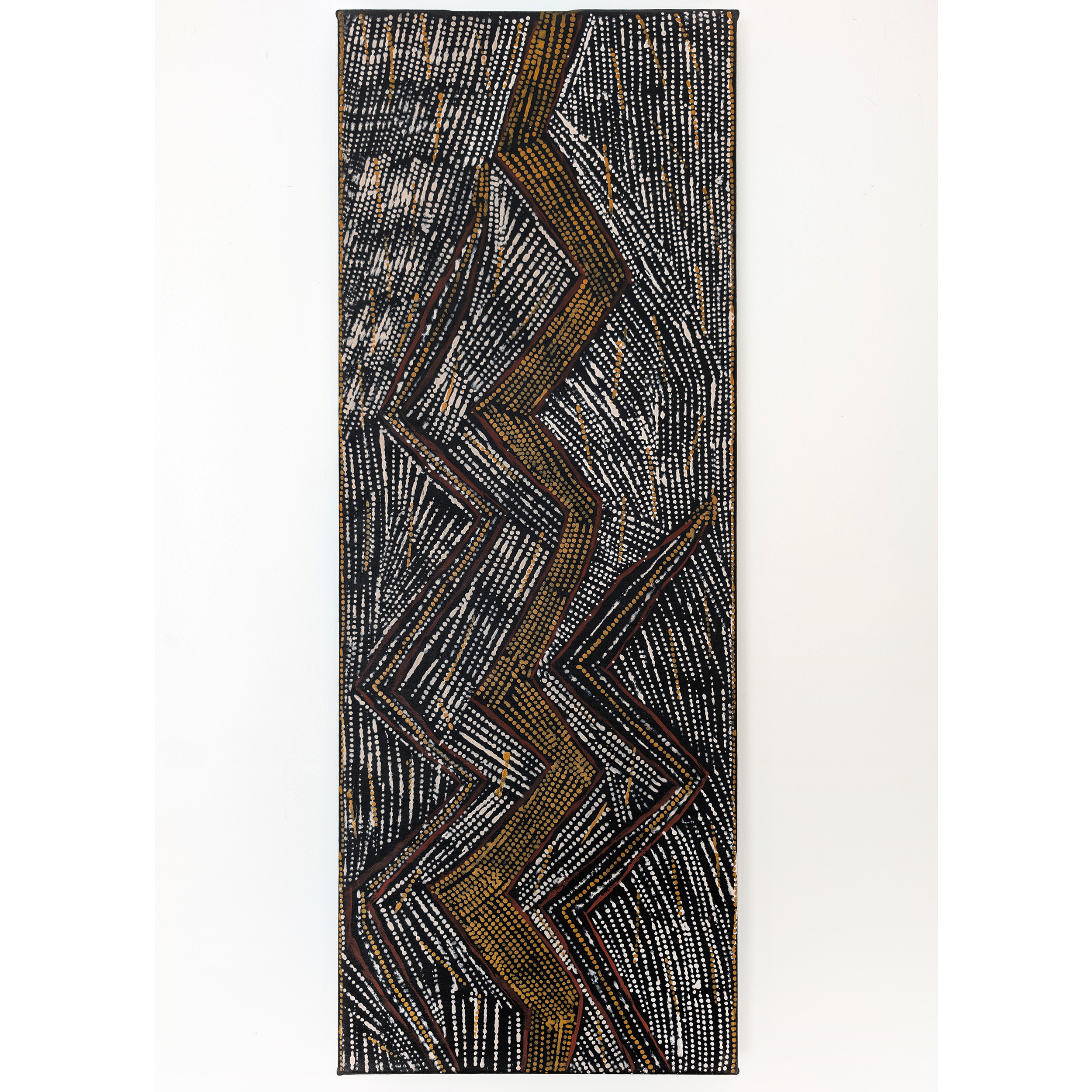

Artist: Albert Tipiloura | Title: Tiwi bird | Year: | Medium: natural ochres and acrylic on hand carved ironwood | Dimensions: 29 x 10 cm
PROVENANCE
Tiwi Designs, NT
ARTWORK STORY
The practice of Tiwi figure carving stems from Pukumani funeral carving: spectacular carved and painted poles that are placed around the grave during ceremonies for the dead. This figurative element is in keeping with the longstanding innovative and evolving nature of the Tiwi artistic tradition, even though it developed at the time of European arrival and influence.
Pukumani denotes a taboo and is a period of time in which certain tasks are forbidden, including the speaking of the deceased’s name. This accounts somewhat for the plethora of names that Tiwi often have or use, and which have often confused outsiders. The dramatic rituals of Pukumani are mythic in origin. The enacting of the story of how death came into the world is performed over days. It is a story of human desire and misdemeanour that brought to a close an Eden-like creation period, similar to the Dreamtime.
Tokampini (birds) are present throughout the creation story of the Tiwi people. They were mortal beings who bore witness, were messengers, mourners, informers and law makers. They were witnesses to the end of the creation period and were fundamental in making and delivering to mortal Tiwi people the new laws for the land. Tokampini's daughter Bima and her son Jinarni are central figures in the Purrukapali creation myth and song cycle which lies at the centre of Tiwi ceremony and culture.
Artist Profile
COMMUNITY/REGION
Tiwi Islands, NT
LANGUAGE
Tiwi
BIOGRAPHY
Albert Tipiloura has been carving since he was a young boy and his carving is influenced by the renowned Tiwi carver, Sabo Tipiloura (Sebastian) (deceased).
PROVENANCE
Tiwi Designs, NT
ARTWORK STORY
The practice of Tiwi figure carving stems from Pukumani funeral carving: spectacular carved and painted poles that are placed around the grave during ceremonies for the dead. This figurative element is in keeping with the longstanding innovative and evolving nature of the Tiwi artistic tradition, even though it developed at the time of European arrival and influence.
Pukumani denotes a taboo and is a period of time in which certain tasks are forbidden, including the speaking of the deceased’s name. This accounts somewhat for the plethora of names that Tiwi often have or use, and which have often confused outsiders. The dramatic rituals of Pukumani are mythic in origin. The enacting of the story of how death came into the world is performed over days. It is a story of human desire and misdemeanour that brought to a close an Eden-like creation period, similar to the Dreamtime.
Tokampini (birds) are present throughout the creation story of the Tiwi people. They were mortal beings who bore witness, were messengers, mourners, informers and law makers. They were witnesses to the end of the creation period and were fundamental in making and delivering to mortal Tiwi people the new laws for the land. Tokampini's daughter Bima and her son Jinarni are central figures in the Purrukapali creation myth and song cycle which lies at the centre of Tiwi ceremony and culture.
Artist Profile
COMMUNITY/REGION
Tiwi Islands, NT
LANGUAGE
Tiwi
BIOGRAPHY
Albert Tipiloura has been carving since he was a young boy and his carving is influenced by the renowned Tiwi carver, Sabo Tipiloura (Sebastian) (deceased).







